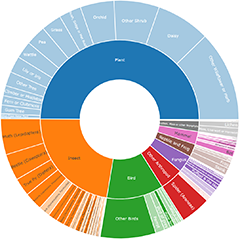Maps
Jumping or peacock spiders (Salticidae)
Sullivans Creek, Lyneham South species
Overview
Sullivans Creek has been identified as an important ecological corridor for aquatic and riparian wildlife through the urban fabric of Canberra, as well as a significant cultural site for Ngunnawal people. Sullivans Creek starts in Goorooyarroo Nature Reserve, in Gungahlin, and flows through to Lake Burley Griffin before water finally enters the Molonglo River.
Moderators
Become the first moderator for Sullivans Creek, Lyneham South































